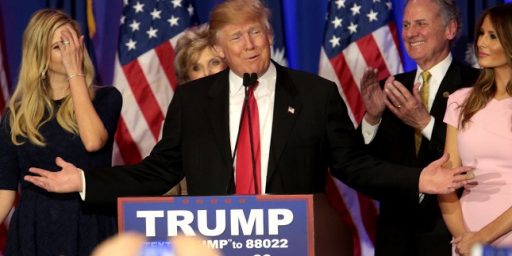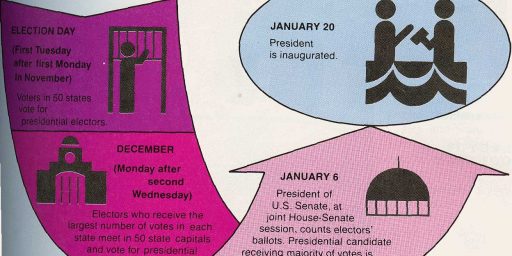Major Problems At Polls Feared
Election experts fear that the combination new voting technologies and undertrained poll workers will lead to disaster in November, Dan Balz and Zachary Goldfarb report.
In the Nov. 7 election, more than 80 percent of voters will use electronic voting machines, and a third of all precincts this year are using the technology for the first time. The changes are part of a national wave, prompted by the federal Help America Vote Act of 2002 and numerous revisions of state laws, that led to the replacement of outdated voting machines with computer-based electronic machines, along with centralized databases of registered voters and other steps to refine the administration of elections.
But in Maryland last Tuesday, a combination of human blunders and technological glitches caused long lines and delays in vote-counting. The problems, which followed ones earlier this year in Ohio, Illinois and several other states, have contributed to doubts among some experts about whether the new systems are reliable and whether election officials are adequately prepared to use them.
In a polarized political climate, in which elections are routinely marked by litigation and allegations of incompetent administration or outright tampering, some worry that voting problems could cast a Florida-style shadow over this fall’s midterm elections. “We could see that control of Congress is going to be decided by races in recount situations that might not be determined for several weeks,” said Paul S. DeGregorio, chairman of the federal Election Assistance Commission, although he added that he does not expect problems of this magnitude.
“It’s hard to put a factor on how ill-prepared we are,” said former Ohio governor Richard F. Celeste, a Democrat who recently co-chaired a study of new machines with Republican Richard L. Thornburgh, former governor of Pennsylvania, for the National Research Council. They advised local election officials to prepare backup plans for November. “What we know is, these technologies require significant testing and debugging to make them work,” added Celeste, now president of Colorado College. “Our concern — particularly as we look to the November election, when there is a lot of pressure on — is that election officials consider what kinds of fallbacks they can put in place.”
The main focus is on whether people know how to properly use the machines, particularly the large army of volunteers who staff the polls at most precincts. “We know the equipment works because it’s been qualified to federal standards,” said Kevin J. Kennedy, executive director of the Wisconsin State Elections Board and president of the National Association of State Election Directors. “The real challenge is to make sure our poll workers are trained and make sure voters have been educated so that we don’t have an experience like Maryland had.”
The story details a myriad of other problems, some technical, some cultural. All-in-all, it’s a mess, especially in a climate where the loser is apt to claim the election was stolen regardless of the margin.
One major problem that could theoretically be corrected but won’t because of cost and other issues, is the reliance on volunteers to man the incredible number of polling centers. The more complicated the balloting method, the more training that’s needed for those volunteers. A fellow on NPR this morning said the solutionis to have them in day after day going through drills until they’ve got it down. That would be fine for full-time workers; volunteers are not going to be willing or even able to devote that much time.
The irony is that the most foolproof method of voting, simply having people fill in a box or circle or X by a candidate’s name on a paper ballot using a marker, is the method we’re moving away from in hopes of increased certainty and efficiency.






In the absence of physical security (which was a prerequisite for the tampering with an electronic voting that got so much attention last week) no method of voting is reliable. Don’t you remember Lyndon Johnson’s famous vanishing ballot boxes?
Our electoral system is a system. The actual mechanics of casting votes is just one component in that system. Pointing out potential weaknesses in a component in the system is a useful service but it’s not dispositive. This is an instance of the fallacy of division.
What got us into this dog’s breakfast is the hysterical overreaction following the 2000 presidential election. There’s nothing whatever wrong with punchcard or mark sense voting systems. Repeated studies have shown they’re roughly equivalent in accuracy and reliability. And significantly more secure than purely electronic systsems.
The irony is that the most foolproof method of voting, simply having people fill in a box or circle or X by a candidate’s name on a paper ballot using a marker, is the method we’re moving away from in hopes of increased certainty and efficiency.
Yes, but those primitive methods fail to correct one of the most pressing problems this fall: many people are expected to vote Democratic.
You pretty much have to have sophisticated Diebold technology to correct for that.
What we have here is Democrats who couldn’t sell the ‘the election was stolen from us” meme the last couple times around, now trying a little advance salesmanship of the claim.